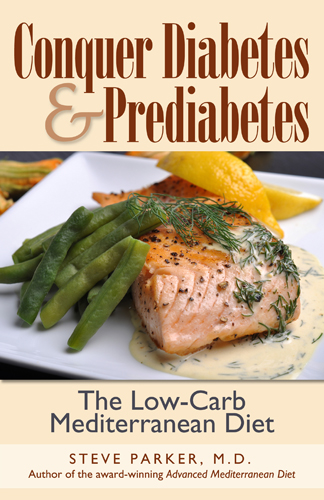[ad_1]

A current examine seemed on the well being advantages of sort 2 diabetes medication, evaluating medication that may trigger hypoglycemia and people who don’t. The very first sentence of the summary didn’t give me a lot hope for what adopted. That sentence was: “Totally different pointers present related, however not an identical, therapeutic targets for HbA1c in sort 2 diabetes. These targets also can rely from the completely different pharmacological methods adopted for intensifying glycemic management.” Did you catch the misprint?
This meta-analysis of 13 medical trials was in search of variations in numerous well being outcomes over the course of at the very least two years, evaluating profitable intensive administration to plain care or placebo. Profitable intensive administration was outlined as at the very least a zero.5% (6 mmol/mol) enchancment in hemoglobin A1c (HgbA1c) degree. “Intensification” of drug remedy is normally utilized to a affected person who is just not at purpose HgbA1c degree. Undoubtedly, the advantages of intensification will probably be larger for these at HgbA1c of 10% than for these at 7.5%. BTW, few giant medical trials embody sufferers over 75 years of age.
For my U.S. readers, word that different international locations typically specify HgbA1c values as mmol/mol as a substitute of %. And blood sugars are usually not our normal mg/dl, however as a substitute reported as mmol/l. HbA1c of seven% equals 53 mmol/mol, which might point out and common blood sugar of 154 mg/dl or eight.6 mmol/l. As one other instance, HbA1c of 6.5% is 48 mmol/mol, reflecting common blood sugar of 140 mg/dl or 7.eight mmol/l. Are you totally confused but?
Within the common inhabitants, lowest ranges of mortality are seen at HgbA1c’s round 5 to five.5% (31 to 36.6 mmol/mol). The common wholesome non-diabetic grownup hemoglobin A1c is 5% (31 mmol/mol) and interprets into a mean blood sugar of 100 mg/dl (5.56 mmol/l). It will fluctuate a bit from lab to lab. Most wholesome non-diabetics could be beneath 5.7% (38.eight mmol/mol). In December, 2009, the American Diabetes Affiliation established a hemoglobin A1c criterion for the analysis of diabetes: 6.5% (47.5 mmol/mol) or larger. Analysis of prediabetes includes hemoglobin A1c within the vary of 5.7 to six.four% (38.eight to 46.5 mmol/mol).
Some skilled panels advocate aiming for HgbA1c beneath 7% (53 mmol/mol), others advocate beneath 6.5% (48 mmol/mol). A serious level of debate between the 2 guideline targets, is that the decrease you set the purpose, the larger the danger of drug-induced hypoglycemia, which may be deadly. Within the early 1980s, the one medication we had for diabetes had been insulin, sulfonylureas, and metformin. Two of these three can may cause hypoglycemia. Now, a majority of our sort 2 diabetes medication don’t trigger hypoglycemia.

The Italian researchers did this meta-analysis as a part of their effort to provide diabetes drug therapy pointers for the Italian inhabitants. On to the examine at hand…
What Did the Researchers Discover?
Improved glycemic (blood sugar) management by intensive consideration lowered the key cardiovascular occasion charge by 10% and lowered renal opposed occasions by 25% however didn’t have an effect on total mortality or eye problems.
Intensified remedy with hypoglycemia-inducing medication didn’t cut back total mortality.
Medication with out potential for inflicting hypoglycemia had been linked to decrease danger of main cardiovascular occasions, kidney opposed occasions, and total mortality, for HgbA1c beneath 7% (53 mmol/mol).
In conclusion, the outcomes of this meta-analysis of RCTs present that in individuals with T2DM the advance of glycemic management with medication not inducing hypoglycemia is related to a discount within the danger of long-term continual vascular problems (main opposed cardiac occasions and renal opposed occasions) and all-cause mortality, at the very least for HbA1c ranges above 7%. The discount of HbA1c under that threshold may have some favorable results, however there isn’t a obtainable direct proof on this respect. When the discount of HbA1c is achieved with medication inducing hypoglycemia, a progressive discount of problems and a rise within the danger of extreme hypoglycemia is noticed. Subsequently, the selection of probably the most satisfactory HbA1c goal for every affected person with T2DM ought to be made contemplating an acceptable danger/profit ratio.
Full textual content in Diet, Metabolism & Cardiovascular Illnesses.
I believe the researchers had been notably glad to seek out that intensification of drug remedy can cut back danger of coronary heart assault, stroke, kidney problems, and loss of life; all this with out the danger of hypoglycemia that comes with medication like insulin and sulfonylureas. The shortage of a mortality profit from hypoglycemia-inducing medication might also be essential. The advantages of intensive drug remedy (or lack thereof) rely considerably on the actual complication you’re attempting to keep away from, and on baseline HgbA1c. Drug remedy is difficult! I anticipate these researchers would advocate a therapy HgbA1c purpose of <7% moderately than <6.5%.
Steve Parker, M.D.
PS: Cut back your want for diabetes medication by shedding extra weight, exercising, and consuming low-carb.

[ad_2]